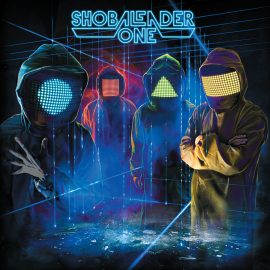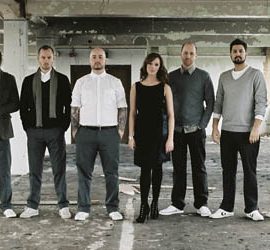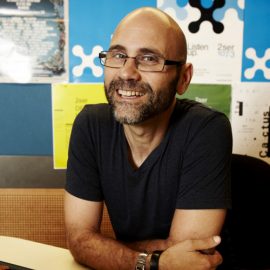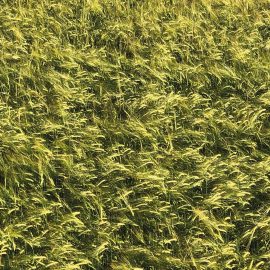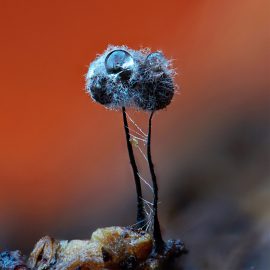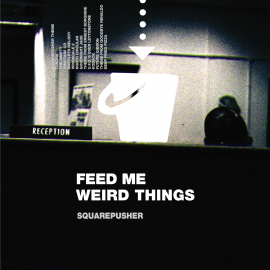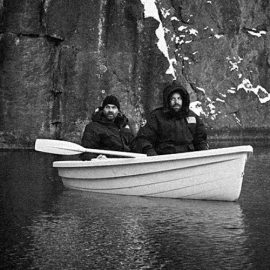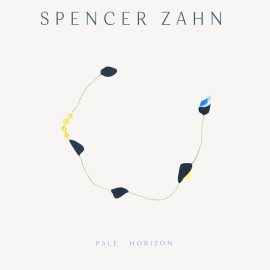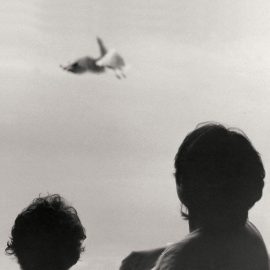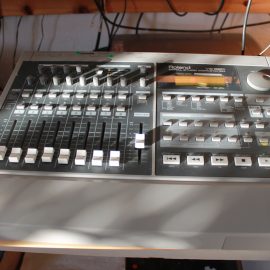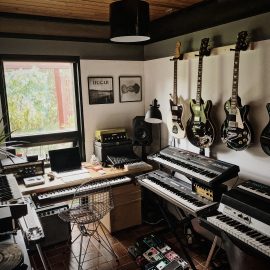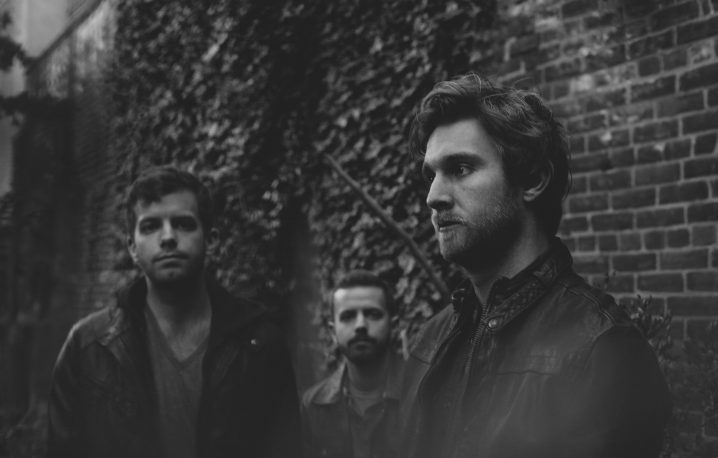
Let’s start at the very beginning. Can you tell us how you got involved in composing, and what was your very first piece of gear?
MICHAEL: I learned guitar in 6th grade by playing along to The Ramones on my dad’s 1978 Gibson “The Paul”. At the same time I was playing trombone in our school’s jazz band and our teacher always emphasized listening: to each other, to the way our instruments’ tones were blending, and the whole band’s dynamics. I fell in love with creating more textural music and when Andrew and I lived together in college, we had a lot of time to experiment with recording it.
ANDREW: Mike and I are twins, so unsurprisingly my origins as a wannabe punk rocker are very similar. However, in high school I fell in love with ‘50s and ‘60s cool & modal jazz – “Kind of Blue” by Miles Davis rocked my world – and I got my first taste of “composition” while writing and gigging regularly in a funk/jam band on bass guitar. In college I went down a very deep rabbit hole of discovery and became fascinated with minimalist and ambient aesthetics, and determined I had to try making my own “furniture music” in the vein of Satie, Eno, Cage, Young, and the dozens of other modern composers being thrown at me on a daily basis in music history courses. I bought a horribly noisy Tascam USB interface and began writing very bad ambient and post-rock music using Garageband, effects pedals and cheap MIDI synths with Mike in our shared apartment. Hotel Neon didn’t come about until 2012 when we decided to get serious with the thick, droning style we developed.
STEVEN: When I was young, I remember sitting at my family’s piano and recording little parts with a cassette player and listening back to them. I had no idea how to play but enjoyed experimenting and trying to create something. In middle school, I played trumpet in the band and started to learn more about the arrangement, dynamics, and structures of music. I suppose my first “real” piece of gear that I owned for myself was an Applause acoustic guitar. I ended up walking out of the store with a Zoom 505 multi-effects pedal too. It was not until later in life after getting out of college in 2006 did I begin to really make an effort to work on my own music using Garageband. I met several false starts beginning projects with friends so I made the decision to just start making music by myself. During that time I began learning to record and mess around with layering textures. Looking back, all those efforts in learning prepared me for joining Hotel Neon.
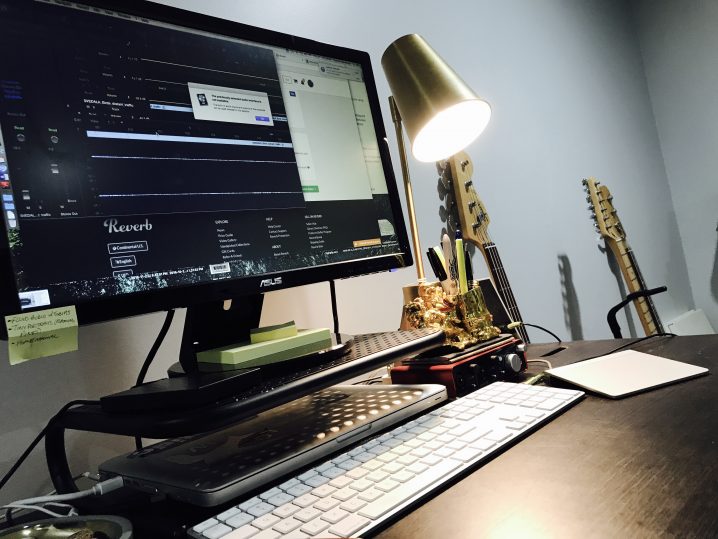
How many different studio iterations have you gone through, and what does your final setup look like right now?
MICHAEL: My setup hasn’t changed much at all over the years- just a Focusrite interface into my MacBook Pro. The amps I own are only for practice; we use software amps live and on the recordings. The geographic distance between the 3 of us means that we bounce ideas back and forth often, and they change constantly. I like to have as little in the way of that flow as possible, and I’m rarely doing anything that needs an elaborate studio setup to record anyway.
ANDREW: I have gone through a constant change in my setup, mostly as a byproduct of frequent relocation. Since those first days of experimentation in college, I have moved a total of 7 times over the last 9 years, and have never allowed myself to accumulate much gear…in fact, it is almost embarrassing for me to show my humble little collection to the world. It’s not at all a “professional” arrangement. But the core of my setup remains to this day simply a MacBook Pro, Logic and countless plugins (I return most often to the Soundtoys suite), a Focusrite 2i2 interface, an Arturia Analog Lab MIDI keyboard, and a MicroKorg synth that has found its way into virtually every track we’ve ever written as Hotel Neon. There has been a legion of guitars and basses as well, frequently traded, swapped, and sold.
The need for mobility has also informed the way I compose. I hate feeling overwhelmed with choice, and I hate being surrounded with LEDs. I need a simple, clean, bare workspace to do my best work. I have grown so used to NOT having a dedicated studio space that I simply can’t function in a typical “fixed” studio setup. When I am composing music, I carry my gear all over the house to find a space that I’m comfortable in and to find new perspectives… quite literally seeking new vantage points, much to my wife’s chagrin.
STEVEN: My current setup has pretty much stayed unchanged for the past several years. The recording setup consists of an ADA preamp into my MOTU interface then to my MacBook Pro running Logic X. I’ve recently begun experimenting with Ableton for our live setup and look forward to diving into the recording functions of it. My computer has quite a few plugins and similarly to Andrew, I really enjoy the Soundtoys suite. On our last album, I experimented a lot with VSTs powered by Kontakt and used Altiverb & Toraverb for reverbs. Like my recording setup, my pedalboard has pretty much stayed the same for awhile now but recently I got a Hologram Infinite Jets that I’m excited to dive into. I’ve got a few Les Pauls, a 72’ tele custom and an acoustic. One of the Les Pauls is equipped with a Fishman midi pickup which is a lot of fun. It allows you to blend your guitar signal with a midi VST or just have straight guitar/VST output. The only studio frustrations I’ve struggled with is changing spaces. I’ve moved several times over the past few years and it takes me awhile to feel comfortable in a space.
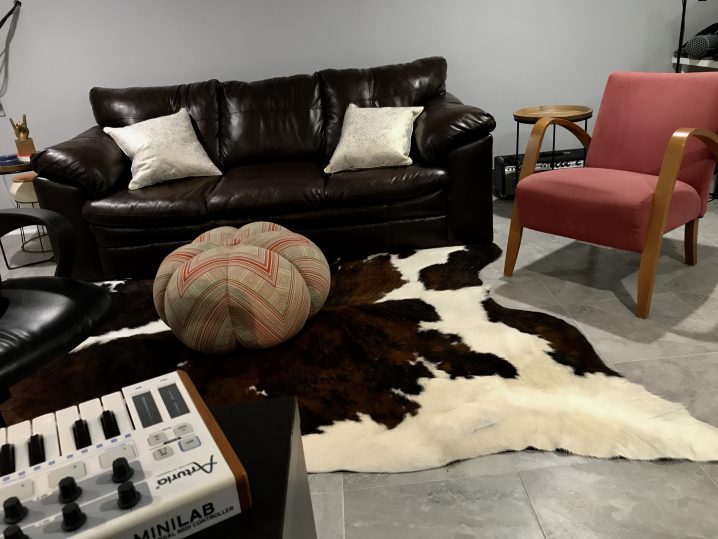
Tell us about your favorite piece of hardware.
MICHAEL: My 1978 Gibson “The Paul”. It’s technically my dad’s, but I’ve semi-permanently borrowed it.
ANDREW: I will always have a soft spot for my Korg MicroKorg. As mentioned previously, it has found a place on virtually every recording I’ve made in the last 5 years, and its A36 patch is a staple of the Hotel Neon sound… I always return to it and can always find comfort there. It’s ugly, clunky, and not very versatile at the end of the day, but I love it just the same. It has thunderous lows and is easy to control live with the cutoff knob.
STEVEN: This is a tough question, I have several pieces based on what I’m doing but I’d say my favorite is my 79’ Gibson Les Paul. Last year we toured with Lowercase Noises and because I flew out to start the tour I borrowed the LP to play throughout. By the end, I had really bonded with the guitar playing it on our first “real” tour. I told Andy from Lowercase Noises that if he ever wanted to sell it I’d buy it from him in a heartbeat and a few months later he sold it to me. I really treasure the memories and the vibes that surround that guitar.
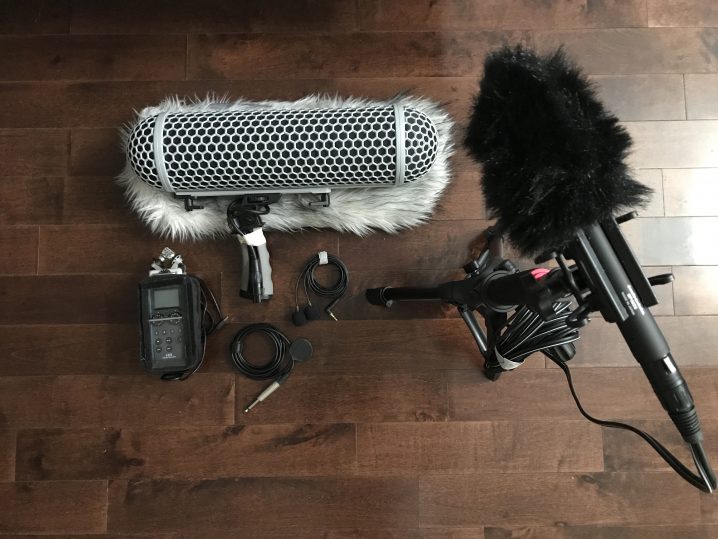
And what about the software that you use for production?
MICHAEL: I use Garageband. It does everything I need in a simple and streamlined package, and the limitations it has kept me more focused on what I’m doing.
ANDREW: Logic is my DAW of choice. I have tried to adapt to Ableton, Reaper, Pro Tools, etc. but I simply find the Logic interface to be best for what I’m doing. I’m always experimenting with plug-ins and won’t bother listing every single one, but I return most often to the Soundtoys suite of effects. The Echoboy delay alone is worth the price of admission, but I also love using distortion, bitcrushing, and other tools of destruction in our music, so I’ve found great sounds with the Decapitator.
STEVEN: I’m a Logic guy too. Similar to Andrew, I just find that it works best for me. Now that we are working on tracks remotely from each other, using the same software has benefits in sharing files. As I mentioned in a previous question, I’ve recently gotten into Ableton and am excited to further explore the seemingly unique things you can utilize it for.
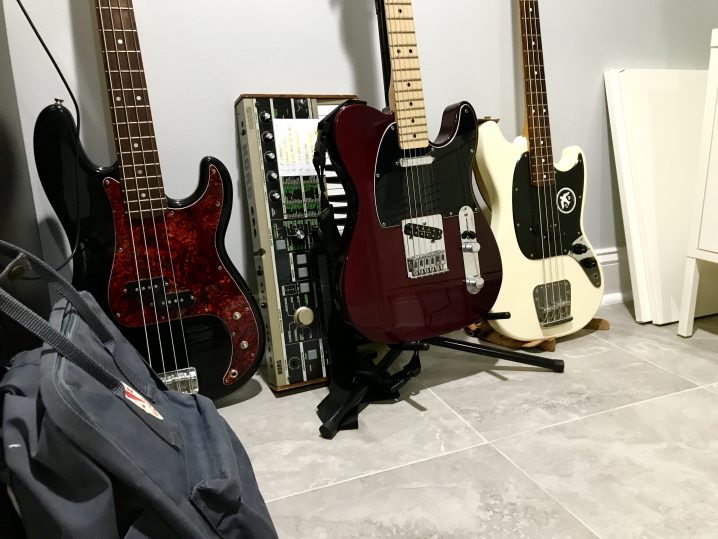
Is there a particular piece of gear that you’re just dying to get your hands on and do you think one day you’ll have it?
MICHAEL: Honestly, no. I enjoy trying new things for fun, but when it comes to recording or performing, I always find myself going back to what I already know and love.
ANDREW: To support my field recording addiction, I am in hot pursuit of a Sound Devices recorder, whether it’s the 722 or 744. I’m always scouring the used markets for one. On that same topic, I’d also love a stereo pair of Sennheiser MKH8040 condensers… I’ll definitely have them someday!
STEVEN: I’d like to get my hands on a Universal Audio Apollo Twin Duo interface. I have a few friends who have upgraded to the Universal Audio offerings and love them. The Duo seems like it would be a simple and minimal fit in my setup. Not to mention, access to the plugins/sims that Universal Audio offers would be great too.
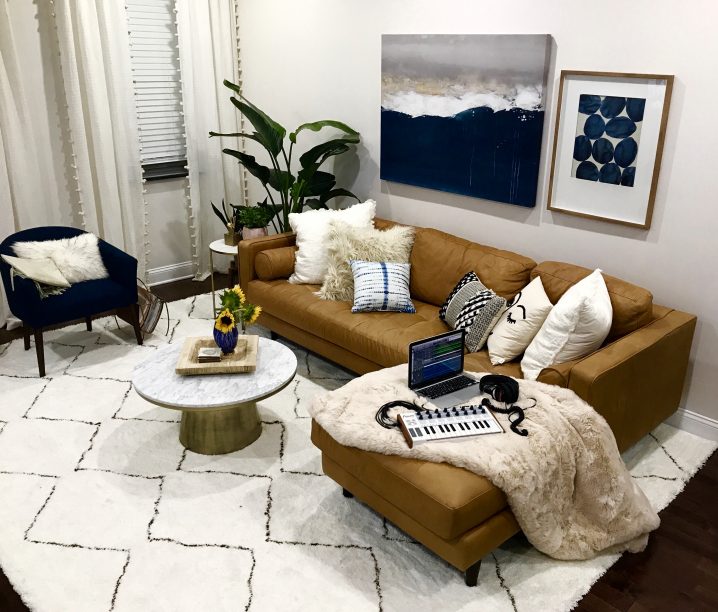
Can you please share some aspects of sound design in your work?
MICHAEL: We’ve always been really fascinated with trying to meld “clean and clear” with “dirty and grungy.” Our unofficial band motto is that if something sounds good, it’ll sound even better distorted and bitcrushed.
ANDREW: I’m not sure how the other guys feel about this, but if I had to make a blanket statement for the band then I would say that everything we do is sort of an experiment in sound design. We aren’t really making songs so much as we are making sounds… that reads a little lofty and pretentious, possibly, but I don’t think we’ve ever written a song and viewed it as a neat, tidy unit. We are always viewing it from 10,000 feet up, and view it more as a fluctuating or flexible statement. We’re constantly warping, twisting, editing, and manipulating the entire track, roughing it up, adding dirty and distorted elements and generally trying to mask any semblance of “normal” instrumentation that might be there. We’ve always been obsessed with creating thick blankets of sound. A song in the DAW is really just a single piece of clay for us; it’s always shifting and being shaped, to an extent. We make heavy use of field recordings, distorted non-musical sounds, and noise of all types – static, electrical hum, etc. – in order to mask traditional instrumentation and add a real sense of mystery for the listener. I want people to ask “What is that sound? Where’s it coming from?”

Any particular new techniques that you tried out for your new album?
MICHAEL: Andrew incorporated a lot of field recordings into “Context.”
ANDREW: “Context” was definitely filled with more field sounds than we’ve ever incorporated before. That’s an area of obsession for me. I feel that the recordings we used ended up serving the purpose of the album well. It was a fun experiment to re-contextualize familiar sounds I captured in places that I know well, inject them into the tracks, and after heavily manipulating them, see how it could translate into a meaningful and cohesive piece for someone else to enjoy.
On this album, we were also very intentional about using an analog mixing process and printing to tape. Matt Kidd (Slow Meadow) did a great job with taking our messy project files, sorting through the layers at hand to make sense of it all, and pushing the results to tape in Houston. The sound is a little denser, thicker, and grittier than what we could have done ourselves.
STEVEN: For me personally, I tried a lot of new techniques on “Context”. One thing in particular I did was create my own sample library of bowed guitar sounds. I had always wanted to try and do something like that and this seemed like a great opportunity. For every album or run of shows, it’s always my goal to raise the bar a little bit. Generally, I make a list of improvements that could be made to whatever I’m working on and those become the priorities when tackling a new project.
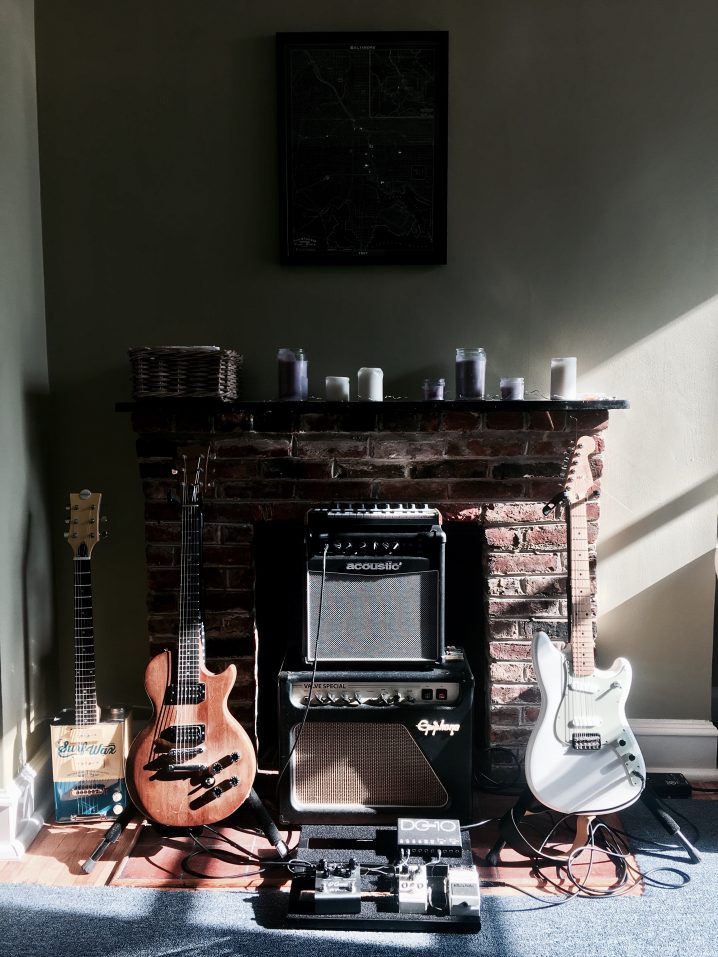
What does your live setup look like, and what do you bring with you when you travel for an extensive tour?
MICHAEL: I only need a distortion, delay, and reverb pedal. When we play live, Steven mixes everything on his laptop and we play through software amps.
ANDREW: We take great pride in having a compact, versatile, and mobile setup: our guitars and synths run into a Behringer XR18 mixer, are processed live in Ableton, and are fed to the house with an L and R output. It is extraordinarily simple and can be controlled wirelessly with an iPad. Setup only takes 15 minutes and we can fit our whole band, with gear, into a small car. We were intentionally trying to create the most compact arrangement possible so that we can take it anywhere and play in any space available to us. All we need is a PA to plug into. This setup was a direct result of the “Slow Spaces” tour series we launched with Lowercase Noises. The whole objective is to bring our music to living rooms, galleries, and other small and unconventional spaces. We are just as comfortable in a living room as we are in a cathedral and can replicate our music in either context. Sound techs love us!
STEVEN: Like Andrew said, we’ve tried to create the most minimal setup possible and I think we’ve achieved that well. It is very satisfying to walk into any space and have complete control over our sound. The brain of our setup is Ableton which all the audio, backing and visuals are controlled though. I use an APC 40 MKII to control it all and mix on the fly. We use Mainstage for Andrew’s synth patches and for visual cues for prominent sections in the tracks.
Outside of my guitar, cello bow and slide I have a lot of midi implementation on my pedalboard. I found the Disaster Area Designs to be a lifesaver in a live setting. Throughout our set, I am doing a lot of looping/overdubbing and I can use the MIDI controller to control my looper. It also allows me switch presets on a few different pedals with just a tap on one switch.

What is the most important environmental aspect of your current workspace and what would be a particular element that you would improve on?
MICHAEL: I live in a studio apartment that’s a little less than 300 sq. ft. My music area is also my kitchen, my bedroom, and my living area. That changes the way I think about what I do musically in that it’s not separated in any way from my “normal” life. I’m the sort of person who’s easily overwhelmed, so being forced to keep things simple also keeps me sane. And not treating my recording space as some sort of sacred shrine keeps me from overthinking what I do there.
ANDREW: Great question. The physical makeup of a workspace is everything to me. As mentioned previously, I really need a clean and minimal space to do my best work, so having a spacious room free of clutter is important to me. At some point I might settle more permanently into a room I’m comfortable with, but when that happens, it will almost certainly need some degree of isolation from other noises in the house in order to maintain the “clean” feeling of the space.
STEVEN: Comfort is the most important environmental aspect to me. Not necessarily physical but mental comfort. Having a space where most of my stuff is setup and ready to go when an idea strikes is also important. Nothing kills an idea faster for me than having one then needing to setup equipment to try it, I like it all ready to go. Eventually I’d like to improve on sound-proofing and implement a “live room” of some sort but for now, my little bedroom space will have to do.
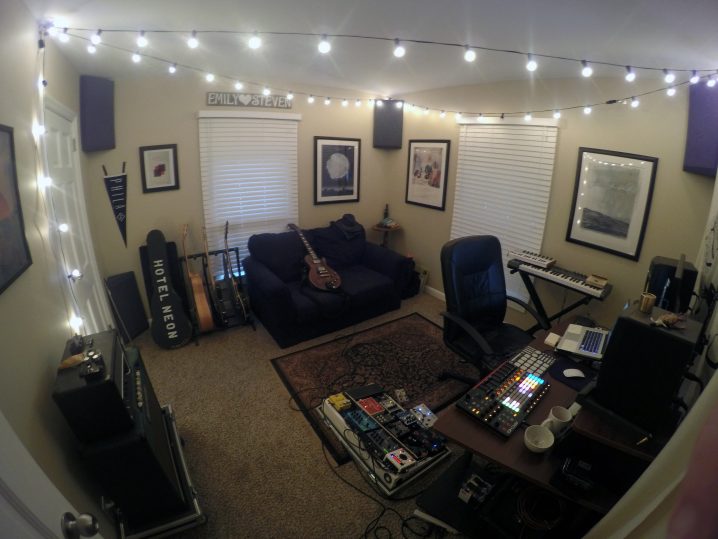
What can you tell us about your overall process of composition? How are the ideas born, where do they mature, and when do they finally see the light?
MICHAEL: My own ideas are born mostly by accident. The advantage of working with a group is that even if something sounds terrible to me, the other guys often hear things I can’t, or that I’ve just become numb to, and it takes on new life.
ANDREW: My personal process changes day-by-day, but most typically, my ideas are born out of observation. I typically see or hear something that either seems worth capturing or inspires an emotional response. I do my best to capture the essence of what that response is, whether it’s passing interest or fascination or some deeper emotional resonance. I typically take a photograph, a recording, or a note in my journal, and I make music that either reflects or accompanies that feeling… if that makes any sense! I’ll think about how the observation makes me feel, what kind of mood it gives off, what kind of instrument or effect might get me close to that feeling… I guess it is similar to soundtracking specific moments in my memory, but of course, there are always the happy accidents that Mike mentioned, in which I simply like the way a new patch or piece of gear sounds and I run with it.
No matter which one of us births the original idea or sketch, it almost always makes at least one loop through the whole band via file sharing and remote recording sessions before it’s reached refinement and consensus. The geographic distance between us is quite challenging sometimes, but it also adds a very impartial and objective quality to the edits and review each of us adds on a given track. We usually work relatively quickly. “Context,” for instance, was basically the product of a marathon week of very intense and rapid succession of recording, sharing, and editing, and we reached consensus quickly. It either sounds good or it doesn’t, and I don’t think we have ever been too attached to the pieces we write to be kept from making that decision quickly.
STEVEN: Generally I start with some sort of loop as a base then build on it. Most of the time that loop doesn’t make the final track but I need something to play off. With the geographic distance, it serves as something to interact with being separated from Michael and Andrew. Weaving textures and frequencies together is my favorite part of creating our sound. Typically everything I contribute to the tracks is just one take. There is something very special having that “in the moment” feeling to what I do. I try not to overthink what I’m doing and contribute what initially comes out. I’d say that out of both Andrew and Michael, I tend to focus more on the arrangement. Despite drone style music not having a conventional song structure, I still mentally like to pick out parts. “Intro, verse, build etc” Doing that helps me organize my thoughts and allows me to feel sections of the track are complete. I think “Context” is special to me because all of us have grown in our abilities so much and with the distance that is key. We all know our strengths and play off each other’s very well.

After the piece is complete, how do you audition the results? What are your reactions to hearing your music in a different context, setting, or a sound system?
MICHAEL: I like to sit in the armchair by my window while I listen and just watch the city hum along. The key is a strong reaction in general. Each of us will hear things a little bit differently, but if there’s no intensity in our response to it, it’s not done.
ANDREW: I am rather insistent about putting completed pieces through their paces on “average” consumer gear – it needs to be impactful and massive as can be expected even on iPod earbuds, car stereos, Bluetooth speakers around the house, etc… I am very realistic about the fact that our music might serve as a background to most listening settings. Maybe I am wrong about this, but I don’t think too many people sit down at their desk and sit perfectly positioned, intensely focused with undivided attention through professional reference monitors when listening to Hotel Neon. I’d almost prefer that people DON’T do that and that rather they take it with them outside, transport it to different scenes and settings and let it find a home in new contexts of their own doing. Of course, it’s important the material sound good through those high-end systems too, so that it has a chance to succeed in more settings… but there has to be a balance between hi-fi demands and consumer reality. I’d like the music to reach as many ears as possible.
STEVEN: I think with our music there is no defined context, setting or listening device that I’d say is the right vehicle for listening. Typically I’ll listen back in the car, in earbuds on a walk around my neighborhood or just through my monitors while working my day job. Sometimes I’ll have a few different versions of a mix for a track and listen to them in succession and determine the one that feels the best in a couple different listening mediums. If I’ve been working on a track for awhile I always like to give a 1-2 week buffer to listening to the output. I like to leave some time for the track to “breathe” a little bit and let my ears listen to it without the fatigue of over listening while creating it.
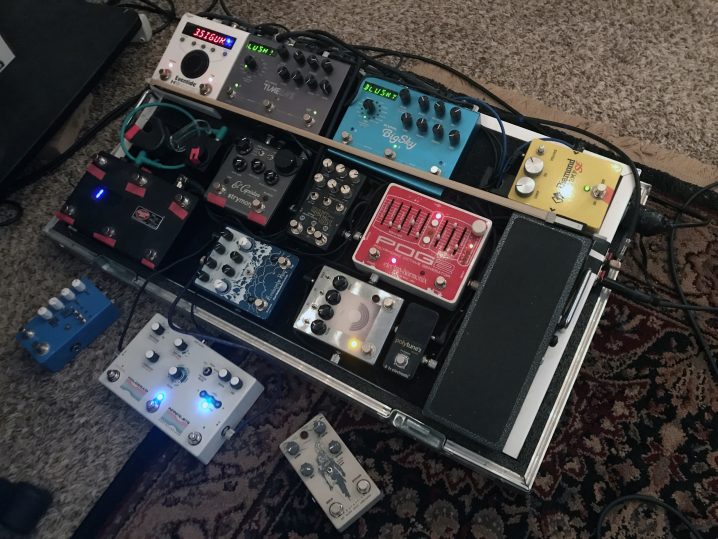
Do you ever procrastinate? If so, what do you usually find yourself doing during those times?
MICHAEL: Rarely, at least when it comes to music. If anything, I tend to rush the production process.
ANDREW: I wouldn’t call it “procrastination” as much as I would call it “hesitation.” Like most creative people I have intense bouts with self-doubt sometimes… “Is this piece any good, and is it worth continuing? Maybe it can wait until I have a better idea.” But typically, as mentioned before, I try to make those decisions quickly and move on with the process. I’m pretty prolific when it comes to writing new material and have multiple pieces ongoing and in development at any given time.
STEVEN: It is both exciting and daunting to begin something new but once I get rolling I tend to put all the time into the project that I can. Sometimes if I get too lost in my own head I tend to feel a little paralysis more than procrastination. If that happens I’ve found that if I step back and start a new track I can get momentum to revisit the previous one being worked on. Another thing that is helpful is waiting for Andrew or Michael to add a part to inspire me to keep plugging away.

What gets you inspired?
MICHAEL: Following my curiosity: learning about people/places that are different from me/my own. Movement: I run almost every day, just trying to listen to everything around me. I’m a different person by the time I finish any given run.
ANDREW: I’m very much inspired by new settings, new ideas, “newness” in general. I have a borderline anxiety that I need to be experiencing and learning *more* at any given time, so I’ll constantly be starting new books, researching new travel destinations, recording new sounds in the field, taking different routes to work, re-arranging studio setups and furniture… anything is fair game. I don’t like constants. I have a hard time sitting still and like to be thrown into unfamiliar settings. It’s why I’m a restless and undisciplined composer, I think.
STEVEN: Very much of why I create music is because I need a way to express myself. Being a more introverted person words don’t always come easily to me. Expressing myself through music I feel like is my true voice. Because of that, I’d say that what inspires me the most is life. It is a little cliche to say that but what my music is to me is an expression of myself and the environments/emotions that surround me on a daily basis.
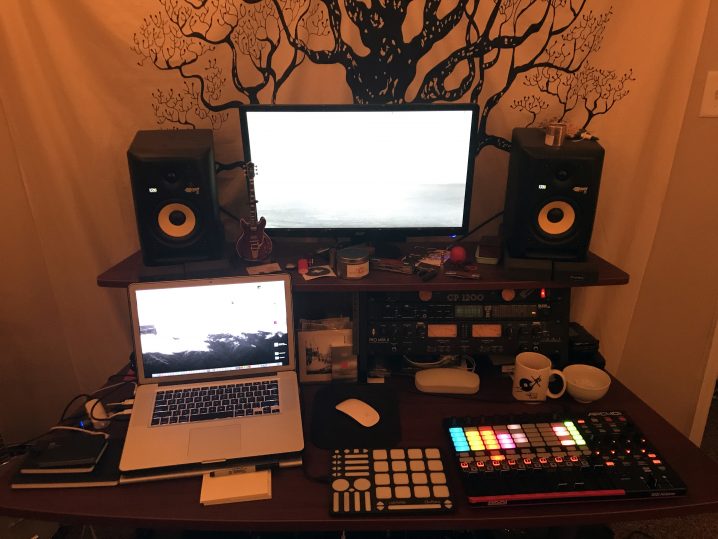
And finally, what are your thoughts on the state of “electronic music” today?
MICHAEL: It’s easier than ever to find bad music and it’s easier than ever to find good music. I’m thankful to live in a time when it’s so easy to connect with the people who make all of it.
ANDREW: Good question. I am a pretty young guy in my mid 20s, but in my brief experience on Earth so far I would say I’ve already seen a trend towards artists and musicians in this space returning to the “classics” for inspiration – everything from using vintage equipment in modern DAWs to rediscovering the giants of the genre in new streaming services like curated Spotify playlists and Mixcloud sessions. Here in Philly, there is a great scene of older electronic and space music “veterans” who are sharing the knowledge with new audiences through radio shows like Echoes, Star’s End, Music with Space, etc. and concert series like Cosmic Crossings, The Gatherings, and more.
To Mike’s point, there is an enormous amount of new music out there and people are getting started creating it for all sorts of reasons, getting inspired from all sorts of sources… but in conversations I’ve had with fellow musicians and even people who listen to our music for the first time, there seems to be a lot of interest in figuring out where this all came from. What’s old is new again, I suppose.
STEVEN: I’ve heard a lot of people talk about the fact that it is easier nowadays to create music is a bad thing, that the market is saturated. It very much is saturated BUT the fact that young artists have an opportunity to be creative and express themselves through the art of music is pretty incredible. Hotel Neon would have probably never had the chance to be heard since we operate outside of the classic studio environments. Since electronic music as a whole is pretty diverse there is something in the genre for anyone to connect with. I’m excited with the direction electronic music seems to be evolving in. Everyone has a voice to be expressed and personally I hear those voices more clearly through the electronic genre of music.
